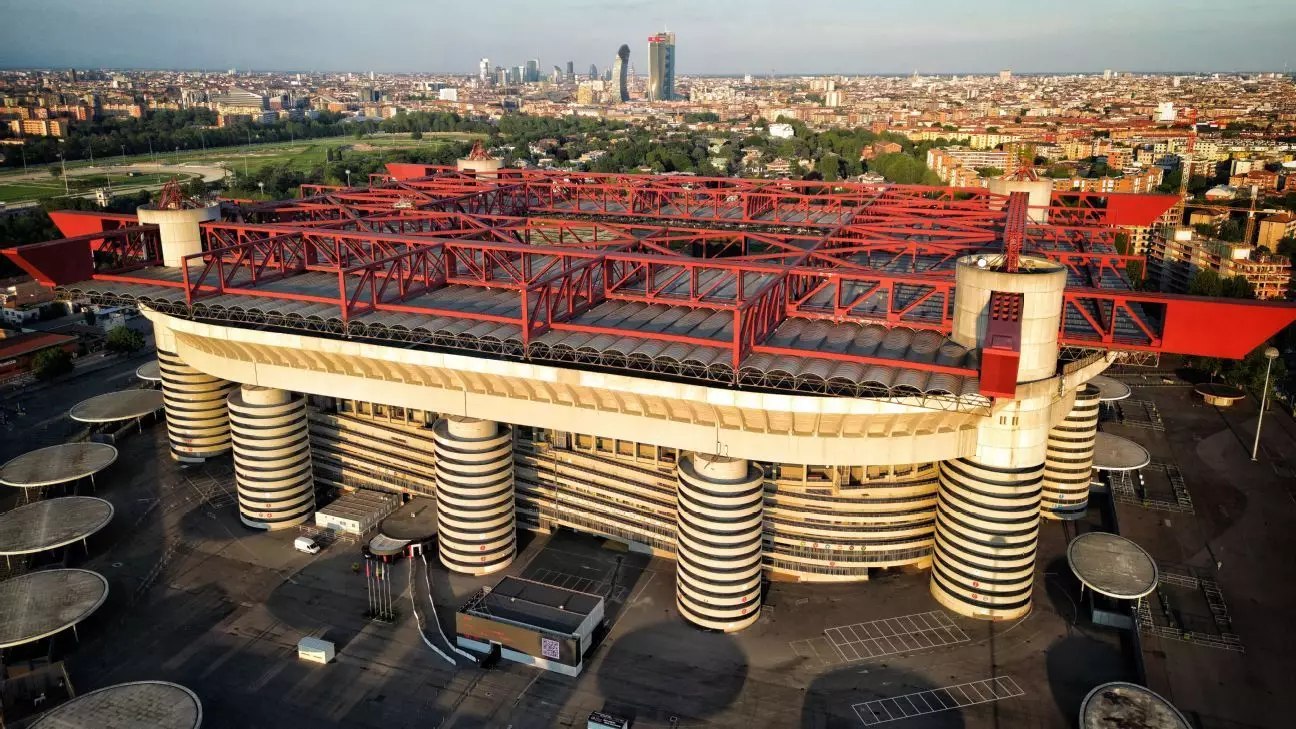The San Siro Stadium, a revered landmark in European football, has experienced an uncertain fate regarding its potential to host the 2027 Champions League final. Originally, the stadium, known formally as the Stadio Giuseppe Meazza, was designated for this significant event back in May, alongside Budapest’s Puskás Aréna for the 2026 final. However, the recent decision by UEFA to withdraw its hosting rights signifies substantial concerns surrounding the venue’s capacity to meet the requirements for such a prestigious match.
At the crux of the issue is the Italian Football Federation’s (FIGC) inability to solidify a comprehensive plan for the San Siro’s multimillion-pound refurbishment. The uncertainty regarding the stadium’s future stems from both AC Milan and Inter Milan’s ongoing deliberations about possibly abandoning the San Siro amenities. The dual-club ownership and their aspirations for modernization clash within a complicated financial backdrop, making it increasingly difficult to confirm any substantial renovation plans.
The San Siro, with its rich heritage dating back to 1926 and a current capacity of 75,817, is an essential part of both clubs’ identities. However, with mounting operational and maintenance costs juxtaposed against potential renovation expenses, stakeholders are at a critical juncture. The fear of a complete demolition looms large, making UEFA’s decision both pragmatic and inevitable.
In light of these developments, UEFA has revamped its approach to hosting future Champions League finals. The Executive Committee’s decision to re-open the bidding process signals a preparedness to pursue alternative venues, ensuring that no event is jeopardized by infrastructural uncertainties. Their statement clarifies that the Municipality of Milan could not provide assurances that the San Siro would remain unobstructed throughout the preparations leading to 2027.
UEFA’s proactive management of this situation demonstrates their commitment to providing an environment fit for one of football’s most celebrated tournaments. Their announcement not only reflects on Milan’s feasibility as a host city but also opens the door for other cities to step forward—especially those who previously opted out of contention.
Looking ahead, UEFA is actively seeking expressions of interest from other cities that might not have considered a bid for the 2027 final. This is a crucial strategy to ensure that the tournament can be held without disruption.
As anticipation grows surrounding the 2025 final set to be hosted at Munich’s Allianz Arena, the upgraded bidding process is an opportunity for various cities to form competitive proposals. With interest potentially rekindled in previously overlooked urban centers, the landscape is ripe for innovation in meeting UEFA’s sophisticated demands for future Champions League hosts.
The unfolding events surrounding the San Siro’s hosting rights serve as a poignant reminder of the complexities in preserving and enhancing historic venues in an evolving football landscape. UEFA’s decisions, albeit pragmatic, highlight the crucial balance between tradition and modernity, making it clear that the future of the Champions League could reside in unexpected places.

